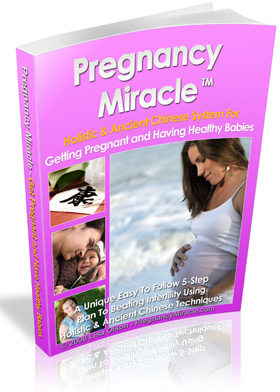 Still fertile, or over the hill: getting pregnant over 40
Still fertile, or over the hill: getting pregnant over 40
Take the case of actress Nicole Kidman. Kidman was previously married to Tom Cruise, a union which lasted for 10 years but failed to produce children. And not for want of trying, either. She had an ectopic pregnancy and an early miscarriage when she was in her 20s and 30s. The thrilling news of Kidman’s pregnancy is an inspiring story for 40-something women contemplating pregnancy. But is getting pregnant over 40 really easy to do?
Kidman attributes her surprise pregnancy to swimming in the fertility waters of the Kununurra falls in Australia. Before hopeful mothers-to-be rush to these waters, here are some facts to consider before attempting getting pregnant over 40.
Pregnancy is a result of three crucial steps: ovulation, fertilization, and implantation. Ovulation is the release of viable egg in the middle of a menstrual cycle. Most women who experience monthly menses are presumed to ovulate midcycle, or approximately on the 14th day after the start of their period. In women with irregular monthly periods, the occurrence of ovulation is more difficult to predict.
Some women in their 40s may not be ovulating as regularly as women in their 20s and 30s. More and more cycles of these women would be anovulatory. This means that they do not produce an egg.
Indeed, decreased fertility and fecundability (or the probability of pregnancy in a given time) in women over 40s is mainly due to a decrease in their ovarian reserve. A decline in ovarian reserve results in less eggs being produced.
What can be done to improve ovulation? Although we cannot increase a person’s ovarian reserve, there are some drugs and herbs which can induce ovulation. If you want to try natural remedies, you might consider taking Ginkgo biloba, Siberian ginseng, and/or chastetree berry. These herbs are believed to improve blood circulation to the reproductive organs, including the ovaries. They also have antioxidant properties. Chastetree berry have the added benefit of being able to induce ovulation by optimizing hormone levels conducive to ovulation.
Fertilization, the next step, is the union of the egg and sperm. After ovulation, the egg is ready for fertilization for approximately 24 hours. This means that sexual intercourse must happen at around this time. Timing is very important. Couples are usually advised to have sex every other day during a woman’s fertile period. Luckily for women in their 40s, age does not decrease sexual fervor.
If you have been attempting pregnancy and is unsuccessful, you might have to be evaluated for tubal problems. Women in their 40s have a higher incidence of tubal diseases or conditions which hinder fertilization. These tubal conditions may be the result of chronic smoking and drinking of alcoholic and caffeinated beverages in their youth. Or it may be the result of diseases such as endometriosis, which worsen over time.
Lastly, a fertilized egg must successfully implant in the uterus. Luckily for us, uterine health does not significantly decline with age. Uterine pathologies such as polyps and fibroids do not significantly affect chances of a successful implantation.
It might not be that simple, but getting pregnant over 40 is possible. And holding that baby in your arms is worth all the effort.
- Family (5)
- Fertility help (8)
- Green Life (11)
- Health (18)
- Mothers (3)
- Relationship (5)
- Television (2)
- Women (10)
- stop stuttering (3)
- Alternative Medicines
- Aromatherapy Essential Oils
- As Seen On TV
- Baby Potty Training
- Budget Travel In Euroope
- Energy Alternatives
- Getting The Right Mattress
- Handicapped Aids
- Health nutrition blog
- Healthiest desserts
- Herbs For Health
- Landscaping Your Garden
- Mold Removal
- Natural Migraine Treatments
- Online Marketing Training
- Sport fitness Blog
- Study High School Abroad
Categories
Helpful Links
Jaz
I gather my helpful tips from all types of media as well as good old fashion ways..! They often from friends and family, meeting groups and clubs, books, magazines and even the TV.
On line we follow blogs and join new social groups. That is where the best advice is ... "Between us".
I hope that the information that I bring will be hopefully helpful to you in some way.
On line we follow blogs and join new social groups. That is where the best advice is ... "Between us".
I hope that the information that I bring will be hopefully helpful to you in some way.
© 2009 All Rights Reserved | Design by BloggerTricks.com based on WordpressthemePark | Distributed by Deluxe Templates





0 comments:
Post a Comment